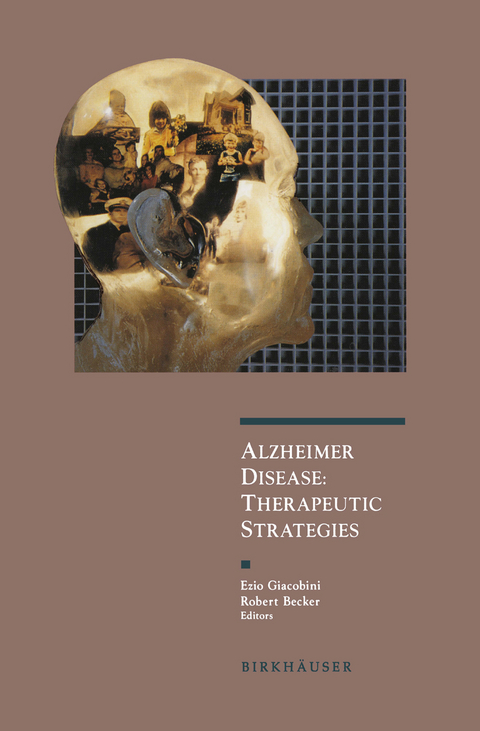
Alzheimer Disease
Birkhauser Boston Inc (Verlag)
978-1-4615-8151-2 (ISBN)
Introductions.- I. Neuropathologic and Genetic Basis of AD Treatment.- II. Therapeutical Strategies to Arrest Production and Processing of Amyloid.- III. The Cholinergic System of Human Brain.- IV. Cholinesterase Inhibitors in AD Treatment.- V. Nicotinic Agonists as Drugs for AD Treatment.- VI. Muscarinic Agonists: Preclinical and Clinical Approaches.- VII. Drugs to Enhance Acetylcholine Synthesis and Release.- VIII. Nootropic Drugs in AD Treatment.- IX. Neurotrophins, Growth Factors, and Neuroprotection in the Treatment of Alzheimer’s Disease.- X. Excitatory Amino Acids, Ca++ Cellular Homeostasis, Nitric Oxide, and AD Treatment.- XI. Antioxidant, Protective, and Anti-Inflammatory Agents in AD Therapy.- XII. Treatment of Behavioral and Gait Disturbances.- XIII. Neurotoxic Drugs, Transgenic Animals, and Aging Primates as Models of Al) Treatment.- XIV. Use of Imaging Techniques (SPECT, MRI, PET) to Monitor the Effect of Drugs in Al) Treatment.- XV. Clinical Testing of Efficacy of New Drugs in AD.- XVI. Socio-Economic Aspects in the Treatment of Alzheimer’s Disease.- XVII. Alzheimer Disease Treatment: The Future.- Author Index.
| Reihe/Serie | Advances in Alzheimer Disease Therapy |
|---|---|
| Mitarbeit |
Stellvertretende Herausgeber: D.L. Smith, J.M. Barton |
| Zusatzinfo | 2 Illustrations, color; 27 Illustrations, black and white; XVI, 510 p. 29 illus., 2 illus. in color. |
| Verlagsort | Secaucus |
| Sprache | englisch |
| Maße | 155 x 235 mm |
| Themenwelt | Medizin / Pharmazie ► Gesundheitswesen |
| Medizin / Pharmazie ► Medizinische Fachgebiete | |
| ISBN-10 | 1-4615-8151-6 / 1461581516 |
| ISBN-13 | 978-1-4615-8151-2 / 9781461581512 |
| Zustand | Neuware |
| Haben Sie eine Frage zum Produkt? |
aus dem Bereich


